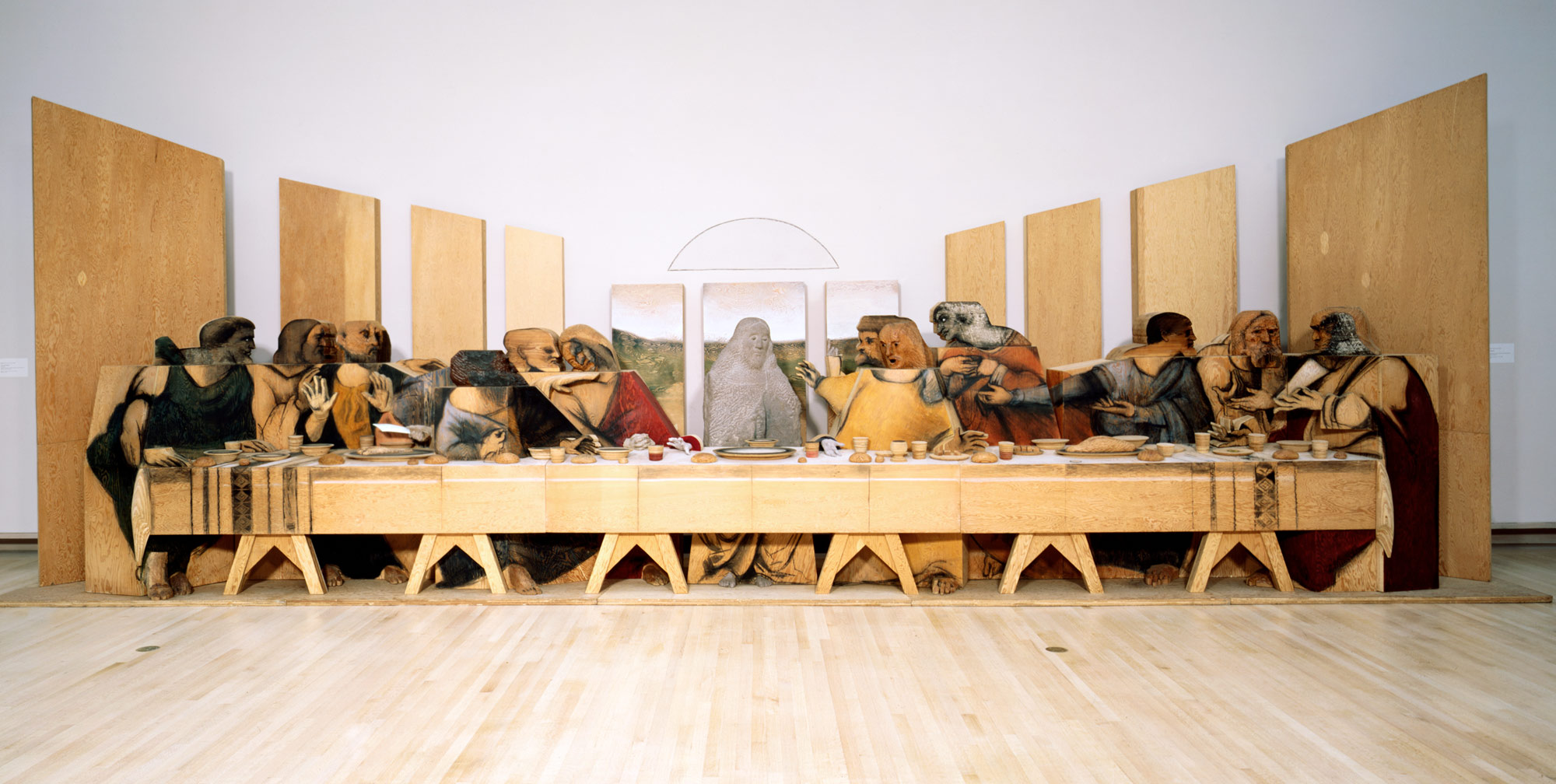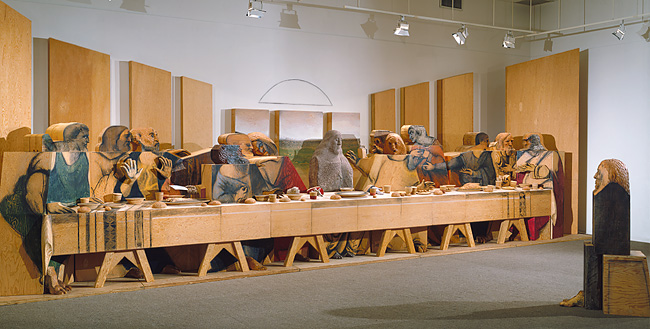Marisol Escobar, otherwise known as simply Marisol, was an artist of the early pop-art era whose work truly reflects postmodern principles on many different levels. The piece shown above is one of her more famous works, Self Portrait looking at the Last Supper. This work is a take on Leonardo da Vinci's classic painting of Jesus' Last Supper. The concept of the piece itself is very postmodern, but the medium in which the art is created as well as the commentary and discussion it sparks align Marisol's work with postmodern ideals on many levels.
Though not shown in the first image, the second very clearly shows a figure of Marisol observing the last supper, detached from the other figures but still an integral part of the artwork. Marisol turns the idea of a self-portrait on its head. The focus is no longer herself but her relationship to other figures and to art. The self-portrait is about Marisol's opinion and thought even though those concepts aren't visible in the work.
This remodeled idea of a self-portrait is postmodern. It questions what a self-portrait is and what is important. Is the self important, or is the way that the self interacts with the world. If a person thinks this "doesn't qualify" as a self portrait, why is that so? What is the significance of observing Marisol's observation? The fact that she references a previous piece of art forces the viewer to wonder what impact art has on their identity. All of these questions fall into the postmodern umbrella of meta-analysis of creative works.
The art is created from wood sculpture, with the exception of Jesus who sits at the center of the table, stable stoic and carved from stone. The bodies of the apostles are made from plywood sheets, continuous and connected, while their heads sit detached on top. The heads aren't aligned with the bodies. Some of the heads are intricately carved, while others are outlined and covered with paint, just like the bodies.
In her choice of material and presentation, Marisol again deploys postmodern ideals. She forces the viewer to question what they consider to be "finished" or "attractive" art. She purposefully represents the human body in a misshapen and uneven form to pose the question of what humanity is, how it is viewed, and how it should be represented. Making Jesus out of stone also raises many questions about religion and belief systems. Are they worth anything? What do they mean? If Jesus is supposed to be compassionate, why is he made out of the most unfeeling material? It forces you to reconsider both the importance of religious figures as well as symbolism that society has pre-identified for art. (eg. why does stone automatically equal cold and insensitive?)
Marisol herself lived a postmodern lifestyle. She dropped her last name, Escobar, as a way to escape the patriarchal identity that society forced upon her, to make herself visible in a new and truer light. She was a postmodernist, and certainly a postmodern artist. Her creative use of materials and the way they fit together as well as her redefined concept of a self-portrait build off the postmodern ideas of how image, media, and the past create our identities and our perceptions. Self Portrait Looking at the the Last Supper is just one example of Marisol's truly postmodern perspective on art and life as a whole.



Nice analysis of the Self Portrait Looking at the Last Supper. It is interesting to think about how society defines what aspects we should and should not judge in a piece of art and what makes art true art. I think you really described to the true definition of postmodernism.
ReplyDelete